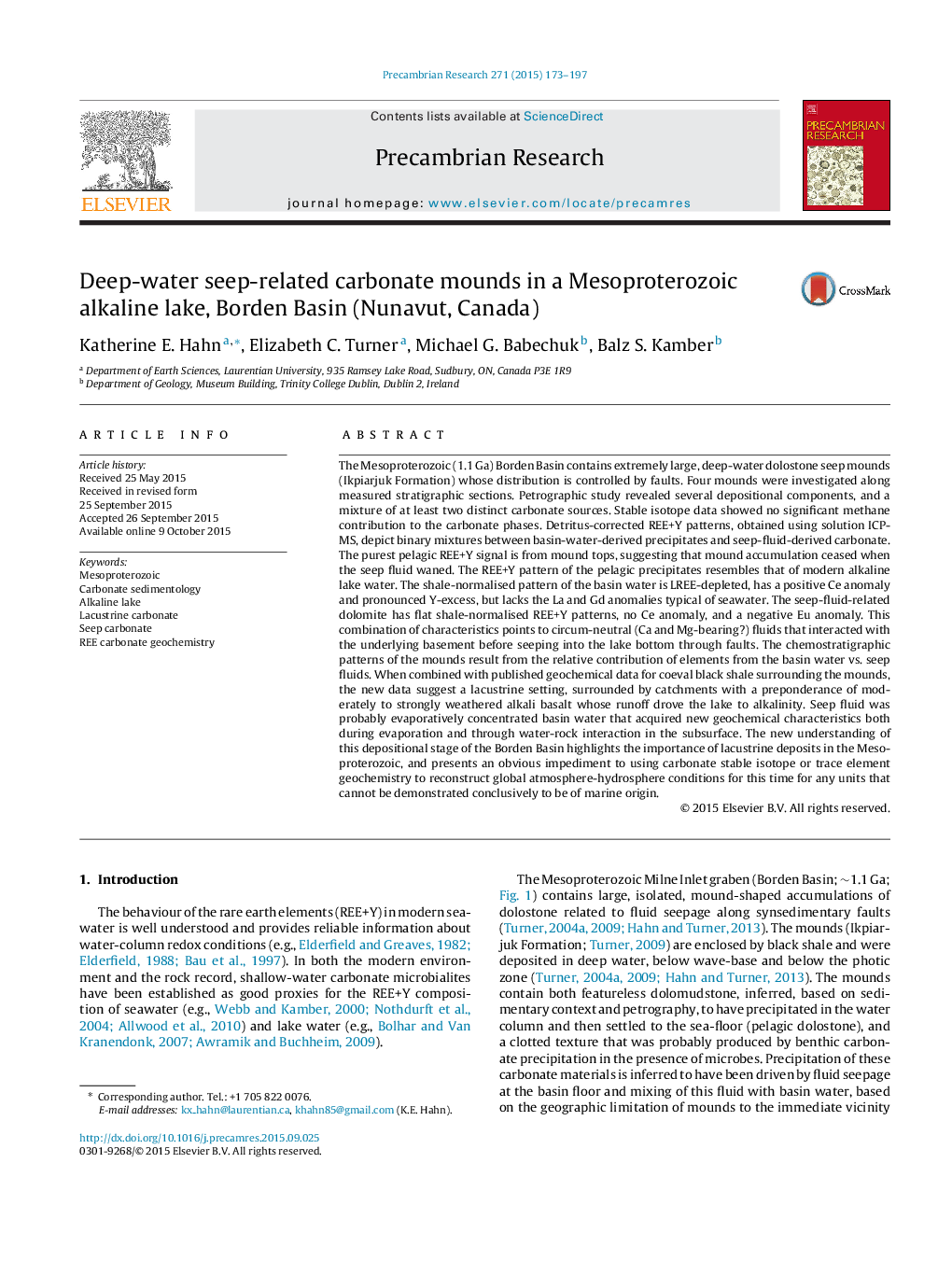| کد مقاله | کد نشریه | سال انتشار | مقاله انگلیسی | نسخه تمام متن |
|---|---|---|---|---|
| 4722485 | 1639604 | 2015 | 25 صفحه PDF | دانلود رایگان |

• The Borden Basin contains very large, unusual, carbonate seep mounds.
• REE+Y patterns depict binary mixing between basin-water and seep fluid.
• REE+Y patterns of basin-water resemble modern alkaline lake water.
• Seep fluid is interpreted as evaporatively concentrated basin water that interacted with rocks in the subsurface.
• New geochemical data suggest a lacustrine setting for atleast one stage of deposition in the Borden Basin.
The Mesoproterozoic (1.1 Ga) Borden Basin contains extremely large, deep-water dolostone seep mounds (Ikpiarjuk Formation) whose distribution is controlled by faults. Four mounds were investigated along measured stratigraphic sections. Petrographic study revealed several depositional components, and a mixture of at least two distinct carbonate sources. Stable isotope data showed no significant methane contribution to the carbonate phases. Detritus-corrected REE+Y patterns, obtained using solution ICP-MS, depict binary mixtures between basin-water-derived precipitates and seep-fluid-derived carbonate. The purest pelagic REE+Y signal is from mound tops, suggesting that mound accumulation ceased when the seep fluid waned. The REE+Y pattern of the pelagic precipitates resembles that of modern alkaline lake water. The shale-normalised pattern of the basin water is LREE-depleted, has a positive Ce anomaly and pronounced Y-excess, but lacks the La and Gd anomalies typical of seawater. The seep-fluid-related dolomite has flat shale-normalised REE+Y patterns, no Ce anomaly, and a negative Eu anomaly. This combination of characteristics points to circum-neutral (Ca and Mg-bearing?) fluids that interacted with the underlying basement before seeping into the lake bottom through faults. The chemostratigraphic patterns of the mounds result from the relative contribution of elements from the basin water vs. seep fluids. When combined with published geochemical data for coeval black shale surrounding the mounds, the new data suggest a lacustrine setting, surrounded by catchments with a preponderance of moderately to strongly weathered alkali basalt whose runoff drove the lake to alkalinity. Seep fluid was probably evaporatively concentrated basin water that acquired new geochemical characteristics both during evaporation and through water-rock interaction in the subsurface. The new understanding of this depositional stage of the Borden Basin highlights the importance of lacustrine deposits in the Mesoproterozoic, and presents an obvious impediment to using carbonate stable isotope or trace element geochemistry to reconstruct global atmosphere-hydrosphere conditions for this time for any units that cannot be demonstrated conclusively to be of marine origin.
Journal: Precambrian Research - Volume 271, December 2015, Pages 173–197